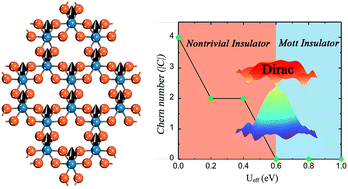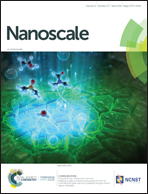Intrinsic ferromagnetism and topological properties in two-dimensional rhenium halides
Abstract
The realization of robust intrinsic ferromagnetism in two-dimensional (2D) materials in conjunction with the intriguing quantum anomalous Hall (QAH) effect has provided a fertile ground for novel physics and for the next-generation spintronic and topological devices. On the basis of density functional theory (DFT), we predict that layered 5d transition-metal heavier halides (TMHs), such as ReX3 (X = Br, I), show intrinsic ferromagnetism with high spin polarization and high Curie temperatures. The outstanding dynamic and thermodynamic stability ensures their experimental feasibility. The strong spin–orbit coupling (SOC) of Re makes the electronic structure of the ReI3 monolayer topologically nontrivial with a large Chern number (C = −4). DFT+U calculations reveal that the 2D system undergoes a nontrivial to trivial transition with increasing on-site Hubbard Coulomb interaction U through the emergence of a Dirac cone. This transition is corroborated by the emergence of chiral edge states and the anomalous Hall conductivity. These findings not only demonstrate room-temperature ferromagnetism in atomically thin 5d TMHs, but also pave the way for the potential realization of the QAH effect with high Chern numbers in pristine 2D layers.



 Please wait while we load your content...
Please wait while we load your content...